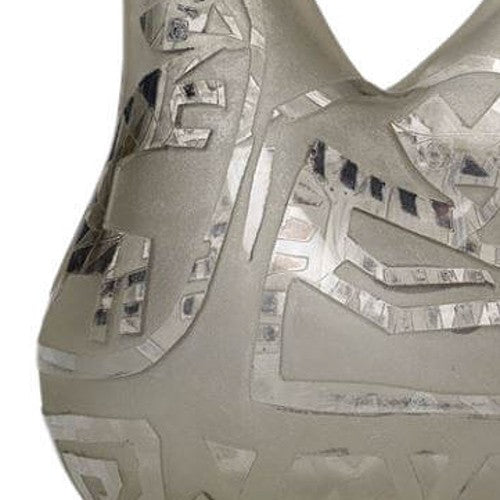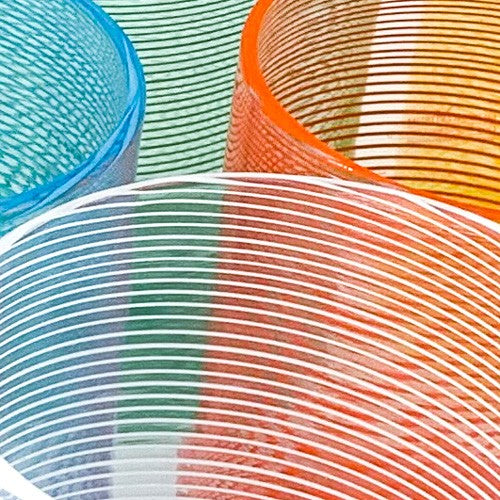Search
Categories
Archive
- September 2022
- February 2022
- September 2021
- May 2021

Decorative dots are applied to the hot glass with very thin glass rods: the tip is burnt in the flame, then leaned against the surface to decorate. The repetition of this operation creates patterns...

A cerchi e a fasce was a series of glassware by Carlo Scarpa for Venini & C . that featured clear glass, decorated with one or more coloured opaque glass ribbon-shaped patterns, in diffe...

The large spot decorated series designed by Carlo Scarpa for Venini is often intensely iridised and includes clear uncoloured glass bowls and dishes with clear glass abstract decorations - suc...
Chinese was the definition attributed to a series of incamiciati (sleeved) glass vases and bowls, with forms drawn from the Oriental porcelain much appreciated by Scarpa.Some of these brightlyco...
This glass was invented by the painter Mario De Luigi who, exploiting Salviati & Co . Experience in the field of mosaics, used this technique for the execution of a series of va...
They are materials that help the fusion of siliceous sand which, otherwise, would have a very high melting point, around 1700c. Usually sodium or potassium sulphates or carbonates are use...

In Murano the word "cristallo" identifies the transparent glass without any colour and is also called "vetro bianco " (white glass). It is a sodic-calcium glass suitable, unlilke the Bo...

Fenicio Decoration obtained by applied thread of lattimo glass or pasta vitrea round the body of the item in a festoon-like weavy pattern, obtained by using a kind of metal comb called "maneret...

Doublé The purpose of this process is to preserve stable the gold or silver decorations. It reminds a technique used in Bohemia in the eighteen century, the "Zwischengoldglas", but with som...

Cased Forms of glass, usually with an opaque white over a colour, in which the outer colour is carved to leave a translucent white relief design or figure in contrast against the layer or t...
Under the opening of the furnace there is a hole from which, during the melting, some glass comes out and pours: this glass is called " colalizza ".

This is a very rare glassware series designed by Carlo Scarpa for Venini & C., and only two of its items are known and datedaround 1942. Consisting of a continuous coil of glass thread, th...

It is a type of treatment made when the glass is cold using the fluorhydric acid which is the only able to natch the glass. It has a decorative effect similar to sandblasting but thinner and intang...

One of the oldest traditional processes already in use in the XVI Century. It is done by applying under heat on the surface of an item a homogeneous series of transparent colourless glass canna ...

Colorazione a caldo senza fusione
This involves dipping a glowing glass bolo on salts, oxides or other elements and covering them by submerging everything with another layer of transparent molten glass. Under the effect of heat th...

The rigato and tessuto glass can be considered Carlo Scarpa ’s original interpretation of the rod glass (i.e. filigree glass) and consists of multi-coloured glass rods. Exhibited at the Venice ...

This is a type of glass invented by Ercole Barovier in 1940 consisting of an application of colourless glass grit onto the surface of an object during its production. W...
